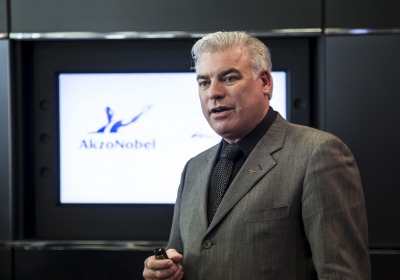Frank Stephenson on the importance of color in design
Wed, 01 May 2013During the announcement of the McLaren Automotive's partnership with paints and coatings company, AkzoNobel, Car Design News took the opportunity to discuss the importance of color in design with design director Frank Stephenson.
According to Stephenson color's ability to invoke emotions and communicate with viewers, he described just how big a part it has to play in the design process and how it inspires designers when developing products.
"The first thing color does is influence the brand – it gives the customer an identifiable element to what we're talking about. McLaren, for example, can be identified by orange," he explains. "It's one of the colors that is most prominent in our history, but of course when we originally used it in the past it was a papaya-type orange."
How color is used is also crucial to creating a connection between a brand and the viewer. Using the work of artists Andy Warhol and Roy Lichtenstein as examples, he says the styles are instantly recognizable and are used in such a way that they create excitement.
"These are two images of the same subject – a young woman with blonde hair – but it's immediately identifiable as to who's done it just because of the way the color has been interpreted. Both very easy to imagine in many different styles but if you use a particular style of color it really identifies the brand," he believes.
As paint technology advanced designers were able to evolve and develop standard colors into the McLaren MP4-12C's Volcano Orange. The production P1 features a new Volcano Yellow color scheme, which proved to be a bigger hit than the orange, Stephenson says. He believes the success of the latest color evolution proves the importance of continuing to push on with the latest paint technology.
The Volcano Yellow paint, for instance, includes tiny spheres of green that reflect light. Invisible until viewing the P1 at close range, they help create a subtle glitter effect that Stephenson says helps emphasize the shapeliness of the car. Using dark colors on McLaren products, he insists, detracts from the efforts of the design team – only bright colors are used to present prototypes to the board, and the new paint technology is even more exciting.
"I think one of the things we have to think about in the future is how to use paint as a new look for the product," he explains. "I think most products lose their emotion at night because they suddenly go a bit darker and they don't really have the effect of sunlight catching them, so what we have to look forward to in the future is about moving things forward and not picking the lowest fruit."
He also suggests that the importance of the surface color may already be fading as we begin to explore technology that can make the car communicate in a different way.
"Maybe the car doesn't have any color at all," he speculates, "and it just comes through the material as a glowing light. It doesn't have to be any particular color for a long period of time, but it can be changed and modified to day or night colors. We can look at light as a different subject rather than just color itself."
"One of the best things I think we have in our profession is the ability to create new trends, new images and looks – if we really work together on this, then it really comes together with clarity," he adds.
By Rufus Thompson

